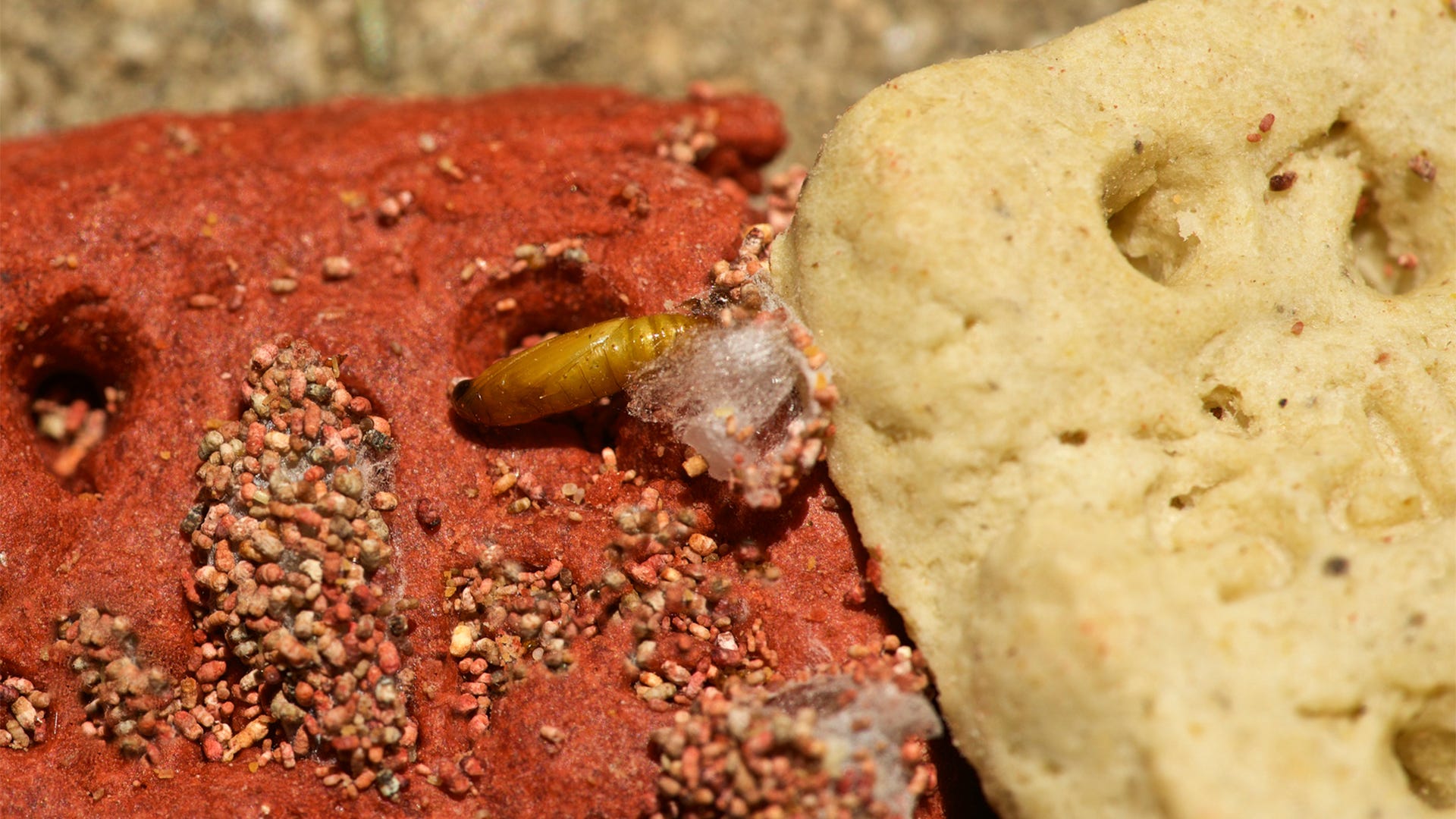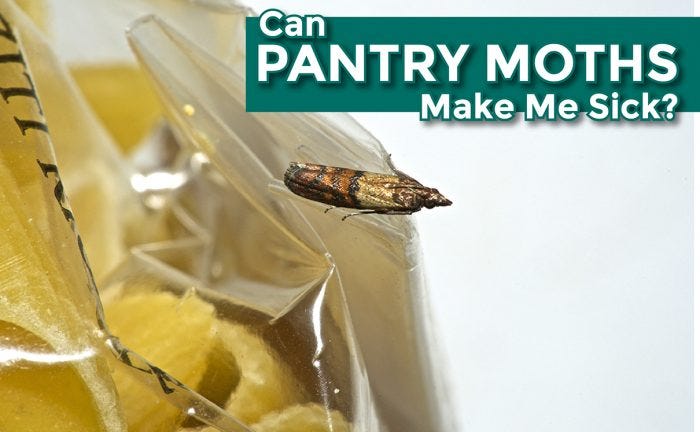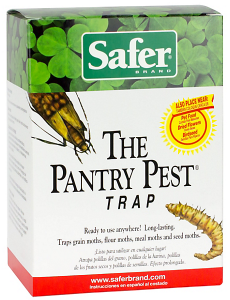
Discovering a pantry moth infestation in your kitchen can be a bit of a shock. What’s worse than that? Finding out that these bugs have been laying eggs in your food, and then realizing you may have eaten some of them while enjoying a snack of cheese and crackers.
That’s right. Pantry moths lay eggs directly on their food source, which can include:
- Bread
- Candy
- Cereals
- Crackers
- Dried fruit
- Dried herbs
- Flour
- Grains
- Nuts
- Pasta
- Powdered milk
- Rice
- Also: Bird seed and dry pet food
That means that until you discovered the infestation, you could have eaten a live moth, its eggs or its larvae. Equally concerning is that it is also possible you consumed their refuse, including their waste material or skin cast-off during molting.
So that begs the question: If I eat a pantry moth, will it make me sick?

Pantry moth larvae can sometimes infest crackers. After this worm-like stage, the larvae will develop into a moth.
Will Eating Pantry Moths or Their Eggs or Larvae Make Me Sick?
Pantry moths, also known as Indian Meal Moths, are the most common moth to infest food in North American homes. Their wings are multi-colored – reddish brown on the tips and pale gray near the base. Larvae are about a ½-inch long and can be yellow, pink, green or brown. Eggs can take anywhere from 30 to 275 days to hatch, depending on environmental conditions.
Aside from the insects themselves, food infested by pantry moths may also have silk webbing present on the surface.
So will pantry moths or their larvae, eggs and webbing make you sick if you accidentally eat them? The experts say no. So, if you ingest them, don’t panic. Indian meal moths are not known to spread any known diseases, parasites or pathogens. Despite that reassurance, it’s still quite gross to think about.
Discovering an infestation should prompt you to consider how these insects got into your food in the first place. First, the food may have been left exposed to these pests at some time during the production or packaging process. This may also make you wonder what else got into the food. Further, an infestation means your food is probably far from fresh — after all, the pantry moths had enough time to go through their reproductive life cycle while inside the package. Both of these thoughts are understandably unsettling.
Defending Your Kitchen Against Pantry Moths
 The unfortunate thing about a pantry moth infestation is that you usually only discover it after it is already occurring. To avert this issue, you should take steps to safeguard your food before using it.
The unfortunate thing about a pantry moth infestation is that you usually only discover it after it is already occurring. To avert this issue, you should take steps to safeguard your food before using it.
Some things you can do to curb your chances of a pantry moth infestation:
- At the store: Inspect food packaging for holes and broken seals. Alert the store manager or take it to the returns counter if you discover this kind of damage. Also check the “Best By” date – remember, older products give eggs trapped inside more time to hatch.
- Bringing it home: Check internal packaging (such as the bag inside a box of cereal) for any holes or damage as soon as you get home.
- Monitor and trap pantry moths: Safer® Brand Pantry Pest Traps are sticky traps baited with a pheromone to attract male pantry moths and interrupt the breeding cycle. Place these in out-of-the-way areas of your kitchen or pantry and check them regularly for catches.
- Store it: After opening a package, whether it’s a pound of flour or a sleeve of crackers, seal it tightly in a plastic container or Ziploc bag.
- Toss it: If you’ve discovered some infested food, seal it up in a recycled grocery bag and immediately deposit in an outdoor trash can. Tossing it in the kitchen wastebasket can give moths an opportunity to find a new food source.
- Treat it: While it’s best to dispose of the food you think is contaminated, you can also opt to treat it. Putting the food in a freezer for a week will kill off any adult pantry moths, their offspring and eggs. Microwaving on high for 5 minutes is another option. You can also bake the food on a shallow pan for at least a half-hour at 130° F or higher.
Fighting Pantry Moths
Did you discover pantry moths in your kitchen? Let us know about it in the comments below. You can also ask us questions about these pests and the pheromone moth traps used to catch them when you visit Safer® Brand on Facebook. For more ideas on battling household pests and to get alerts about Safer® Brand products, sign up for our E-Newsletter!



